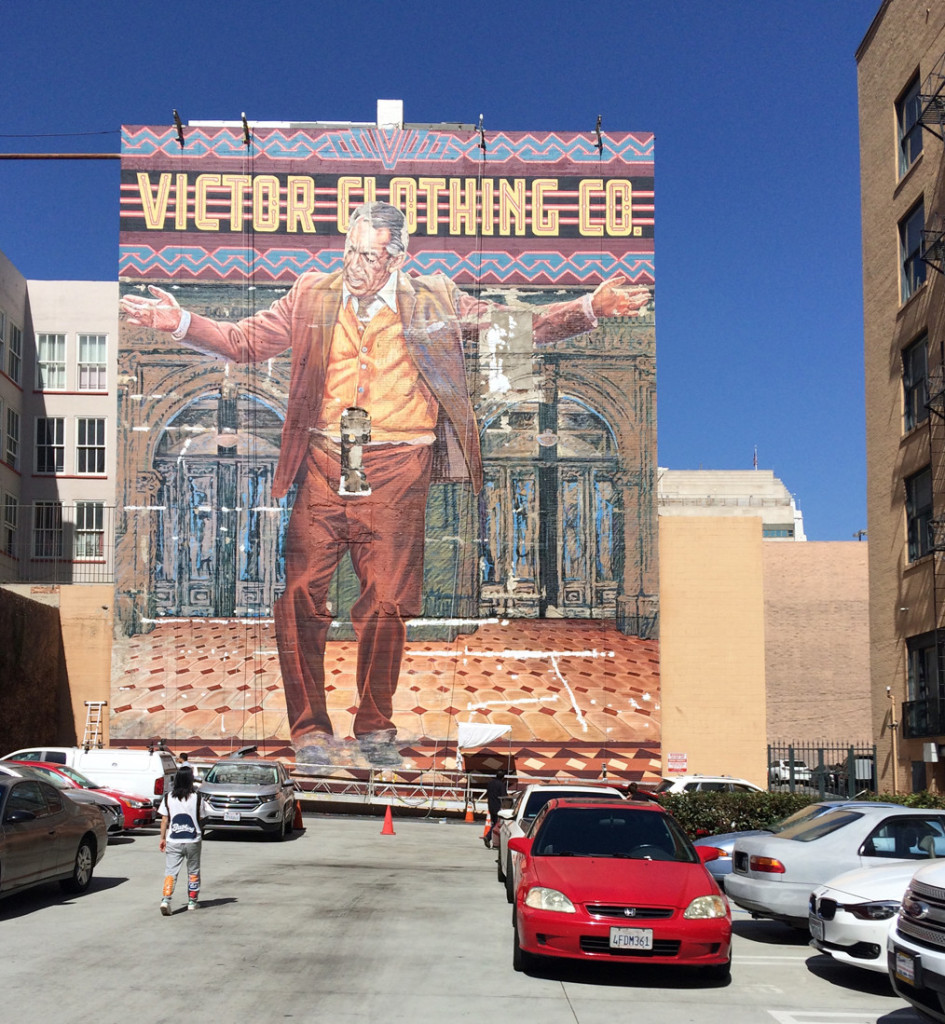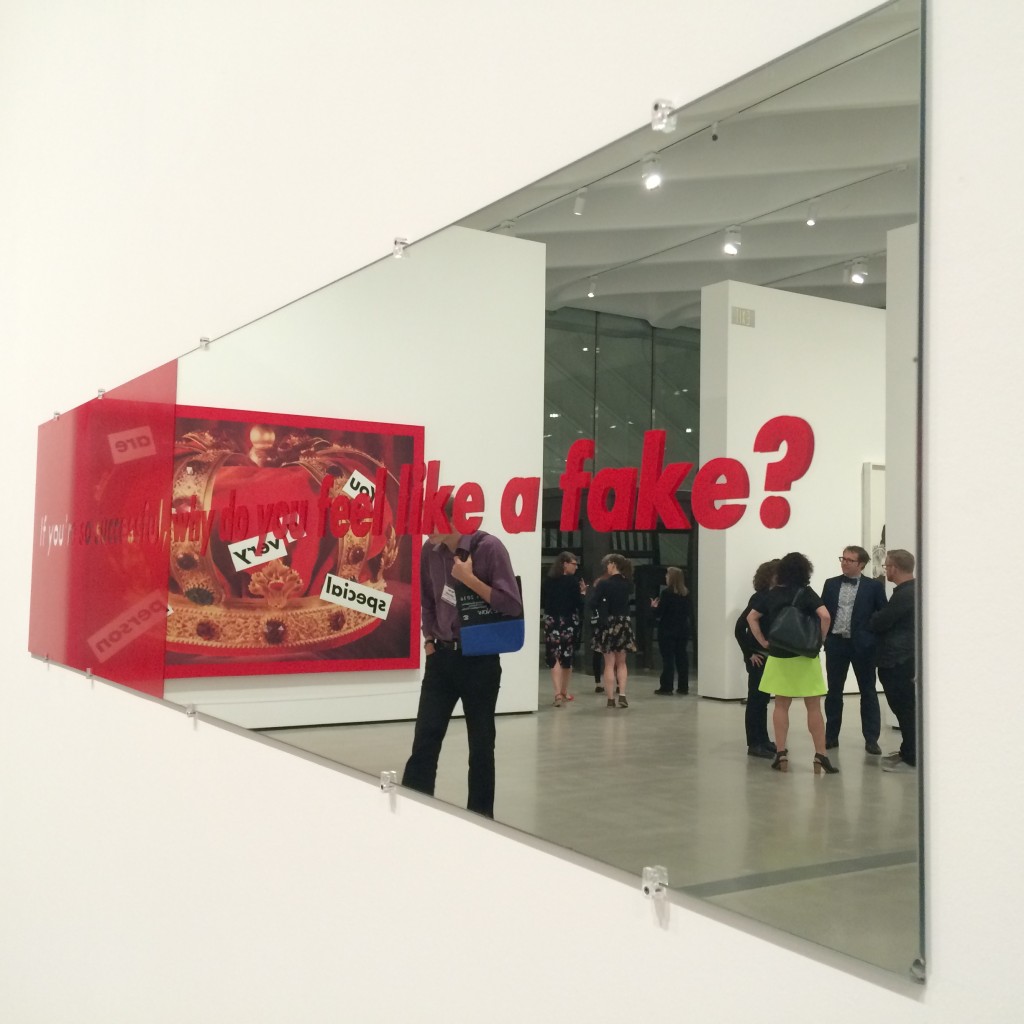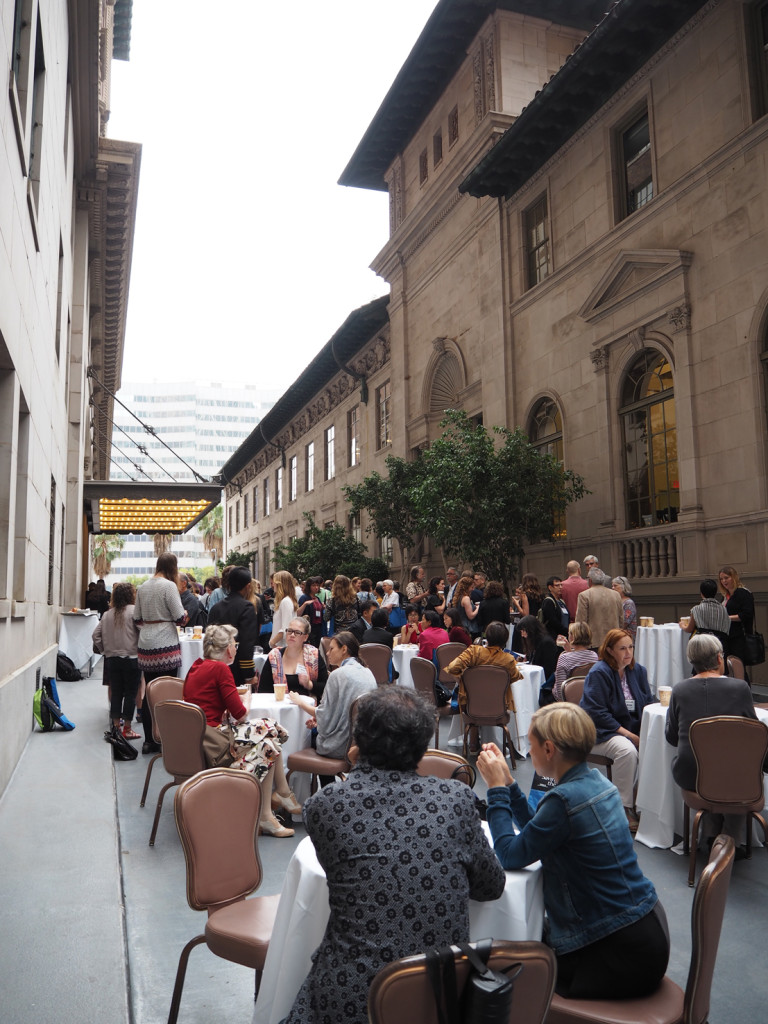This week’s contributing blogger, Marta Garcia Celma, is a conservator of photographic materials and a PhD candidate with The Marie Skłodowska-Curie Innovative Training Network NACCA (New Approaches in the Conservation of Contemporary Art) funded by the European Union H2020 Programme. She is based at Cologne Institute of Conservation Sciences, Germany, researching authenticity and reproducibility on contemporary photography.
From the 12th to the 16th September 2016, the Millenium Biltmore Hotel in Los Angeles, California, hosted the IIC (International Institute for Conservation of Historic and Artistic Works) 26th Biennial Congress, Saving the Now: Crossing Boundaries to Conserve Contemporary Works. This conference focused on opening up dialogues concerning the complexity of conserving Contemporary artworks, from the philosophical background of the decision making process and the reconsideration of the traditional code of ethics in conservation, to the influence of artists, new technological developments, art market and other stakeholders (including the local community and general public) on the conservation of artworks.
The five-day conference brought together professionals from all over the world; conservators, curators, technical developers, museums, galleries and private practices, students, researchers and professors were able to mingle breaks, evening receptions, and tours. Visits to MOCA, the Broad, Urban Light at LACMA, the Getty Center, the soon-to-be-open Marciano Art Museum, and the “Century of murals in downtown Los Angeles” walking tour promoted great environments for networking between the attendees with exceptional results.

The Pope of Broadway (A tribute to Anthony Quinn), LA downtown mural, by Eloy Torrez, during conservation. Photo by Marta Garcia Celma.
The introduction and Forbes Prize Lecture, “The Falsification of Time,” from Carol Mancusi-Ungaro, beautifully articulated many of the most recurrent issues the attendees often face. She mentioned the evolving complexity of our profession due to the material, technical, and thinking innovations implied in the production of contemporary artworks, but she also addressed relevant concepts such as co-reproduction or co-creation and double dating when implementing reproduction as a conservation tool. When the uniqueness of the artwork lives between the concept and the materiality and adapting traditional approaches to new situations generates changes in the professional, doubts of authorship, authenticity, and ownership become paramount. In addition, Mancusi-Ungaro also referred to international platforms supporting collaboration on the conservation of contemporary artworks such the conference partner INCCA, International Network for the Conservation of Contemporary Art[1], and the new research program NACCA[2], New Approaches in the Conservation of Contemporary Art.
Not far from that concept of collaboration, we had the pleasure of listening to Robin Clark and Michel Barger discuss “The Artist Initiative at San Francisco Museum of Modern Art” which introduced the impressive advances at their museum. The five-year Artist Initiative[3] project promotes collaboration between the museum departments, artists, and external specialist with the shared goal of quality research and broad dissemination, serving Photographic, Painting and Sculpture, Media Art, and Architecture and Design curatorial departments. In addition, with the new building, SFMoMA has incorporated a Collections Workroom, a transparent, multipurpose area at the conservation studio that fosters the dialogue between the museum, the public, the artist and researchers. A Mock – Up Gallery at the Collection Center also offers the opportunity to research and access works of art that are not on display in the museum and prototyping exhibitions.

Untitled (If you’re so successful, why do you feel like a fake?) by Barbara Kruger at The Broad Museum. Photo by Marta Garcia Celma.
Another museum that shared their views on approaching Contemporary works of art was The Metropolitan Museum of Art. In this case, the paper “The future is not what it used to be: Changing views on contemporary color photography” by Nora W.Kennedy, Meredith Reiss, and Katherine Sanderson outlined the Met’s approach to contemporary photographic materials, acquisition policies, documentation, and terminologies developed with the arrival of these hybrid photographs into the Museum. Contemporary color Photographs produced through traditional and digital photography and by the hybrid combination of historical and new technological printing processes are showing unknown but often speedy rates of deterioration. Their format and finishing techniques presenting innovative narratives add difficulties when attempting practical conservation treatments. In addition, the active voice of the photographers, the artist intent and, the multiple values (material, conceptual, economical) of the artworks are influencing changing views in our conservation approach. Within this frame, The Metropolitan Museum of Art is evolving its acquisition policy acquiring, if possible, a second copy ‘Reserve Print’ of the ‘Collection Print’, or a ‘Match Print’ or ‘Exhibition Print’ of the Collection Print to ensure possible substitution as a conservation tool.
A case study presented by J.Luca Ackerman, Peter Mustardo, Hanako Murata, and Tatiana Cole titled “Cindy Sherman: A play of Selves / A Collaborative Approach to Conservation” exemplified a project in which reproduction, partial substitution, was used as a conservation tool. Ackerman introduced us to the technical complexities in the reproduction of traditional photographic mediums due to the obsolesce of materials and others, to the ethical and philosophical dilemmas surrounding these approaches and to the confrontations with the well established Code of Conduct and Standards of Practice in the field. “What level of reproduction is acceptable?” Luca asked. “What percentage of reproduction is considered a duplication instead of conservation?” Other relevant factors in the final decision of reproduction as conservation treatment arose during the Q&A. What real impact does the art market have on conservation approaches? How does the economic value of the artworks impact the decision making process? The public identified with such questions, which still resist answers in the evolving times of our profession.
Presentations concerning conservation of contemporary architecture, design, and urban planning were introduced with papers such as “Preserving the Open form: The Oskar and Zofia Hansen House in Szumin: Between architecture and contemporary art” by fellow NACCA affiliate Agnieszka Wielocha[4]. Interventive treatments were also represented in different presentations, of great interest was “Testing the limits: The theoretical development and practical reality for a discolored Morris Louis” by Samantha Skelton[5], NACCA. Finally, the relevance of self-reflective understanding of our role and the value of our decisions was exposed by Sanneke Stigter on “Auto-ethnography as new approach in conservation”.
Saving the Now: Crossing Boundaries to Conserve Contemporary Works showed changes in the traditional paradigms of conservation and evident proximities in conservation approaches for different media contemporary artworks. Contemporary conservators are being forced to step out of their comfort zone, developing new approaches, broadening the number of stake holders involved in the discussions and expanding conservation research to new areas. Wonderfully, the growth and collaboration between peers is showing brilliant results.
[3] https://www.sfmoma.org/artists-artworks/research/artist-initiative/ Accessed on 23th October 2016
[4] http://nacca.eu/research-projects/artist-participation-in-conservation/
[5] http://nacca.eu/research-projects/conservation-sciences-in-modern-and-contemporary-art-authentication/

